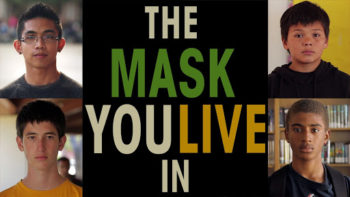by Rachel Grate
“The depressing thing about the Christmas season – isn’t it? – is that it’s the time when all the institutions are speaking with one voice… They all – religion, state, capital, ideology, domesticity, the discourses of power and legitimacy – line up with each other so neatly once a year.” – Eve Sedgwick, “Queer and Now”
Christmas is a powerful force. As soon as Halloween ends, the commercials conquer TV and the songs invade radio. Come December, newscasters begin to frame each story in what Sedgwick calls “the Christmas question”: will the soldiers be home in time for Christmas? State-run schools and businesses get Christmas off – but no vacation time is dedicated to Hanukkah or other religions.
I’m not trying to be the Grinch–I love Christmas. It can be a comforting holiday, a celebration of one’s religion or family, but both religion and family are defined very narrowly in the holiday season. Unfortunately, Christmas songs, advertisements, and traditions are unavoidable and are often entrenched in stereotypical gender roles.
Take mistletoe, for example. Mistletoe was regarded as a sexual symbol with fertility powers before Christianity, and like the date of Christmas itself, the church adapted preexisting Pagan customs to facilitate conversion.
According to The Holiday Spot, during the eighteenth century “at Christmas time a young lady standing under a ball of mistletoe, brightly trimmed with evergreens, ribbons, and ornaments, cannot refuse to be kissed…If the girl remained unkissed, she cannot expect to marry the following year.”
Thankfully, women nowadays have the option to refuse unwanted advances, but avoiding mistletoe at holiday parties can still be an exhausting experience.
This is not to say that a moment under mistletoe with one’s significant other can’t be romantic. But it can be important to remind ourselves of the historical creation of these traditions, especially for those in non-traditional relationships that are often marginalized during the Christmas season.
After all, the pressure to find the perfect gift from Santa (or to fit the cheery holiday narrative) can be at least partially alleviated by the knowledge that an American cartoonist designed the modern rosy-cheeked, round-bellied Santa in the 19th century. These traditions may be comforting, but the moment they become stressful, it is key to remember that they were created – and they are optional.
Perhaps the best demonstration of Christmas’s somewhat arbitrary influence is its effect on the traditions of other cultures. Hanukkah is held up as the Jewish equivalent of Christmas, but this isn’t historically accurate. In Israel, Hanukkah isn’t celebrated as heavily as in the United States, because it is no more important than other Jewish holidays.
A study published in the Economic Journal in 2011 titled “Is Hanukkah Responsive to Christmas?” reported in its abstract that in America, “Jewish-related expenditures in Hanukkah are higher in countries with lower share of Jews. These findings are consistent with the hypothesis that Jews increase religious activity during Hanukkah because of the presence of Christmas … Jewish parents in the U.S. celebrate Hanukkah more intensively so their children do not feel left out.”
This holiday season, don’t be afraid to make your own traditions, or rejuvenate the ones you’re surrounded by. Why not hug under mistletoe, or simply exchange compliments? If expensive holiday gifts are wearing down your budget, suggest a White Elephant gift game with friends.
My favorite part of the holidays are the simplest: Going into the mountains and cutting down my own tree, baking pumpkin pies with my father, going to the empty movie theater on Christmas Eve. These aren’t reliant on a pre-defined idea of family or home, but they are what define the holiday season for me.
Throughout this blog series, I’ll be taking a closer look at the Christmas media that define the holidays from a place of privilege. Now that we’ve covered the historical context, in the next few days I’ll walk you through holiday media: songs and advertisements that reinforce gender roles. And we’ll finish things off on a cheery note, with #MediaWeLike gift guide.
Together, we can make sure this holiday season remains happy.
Rachel Grate is an intern at MissRepresentation.org and a student at Scripps College, where she is studying English and Gender & Women’s Studies. Read more of her work on her blog or connect with her via LinkedIn.



